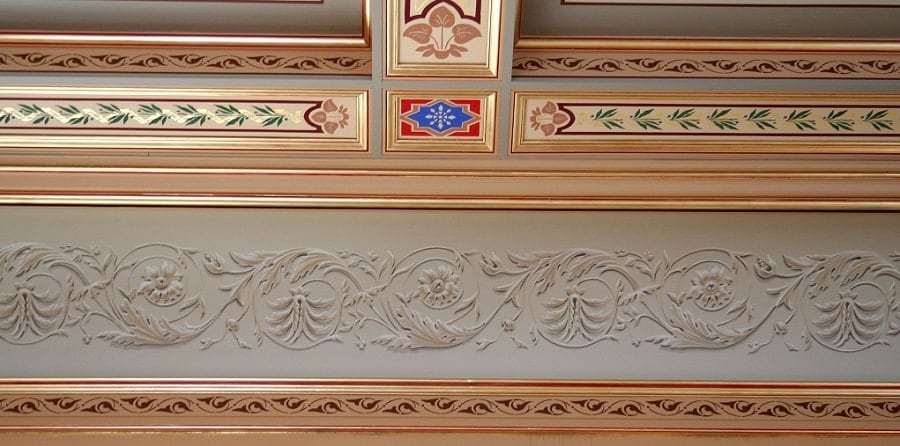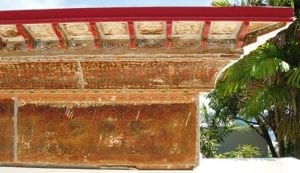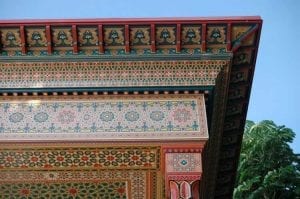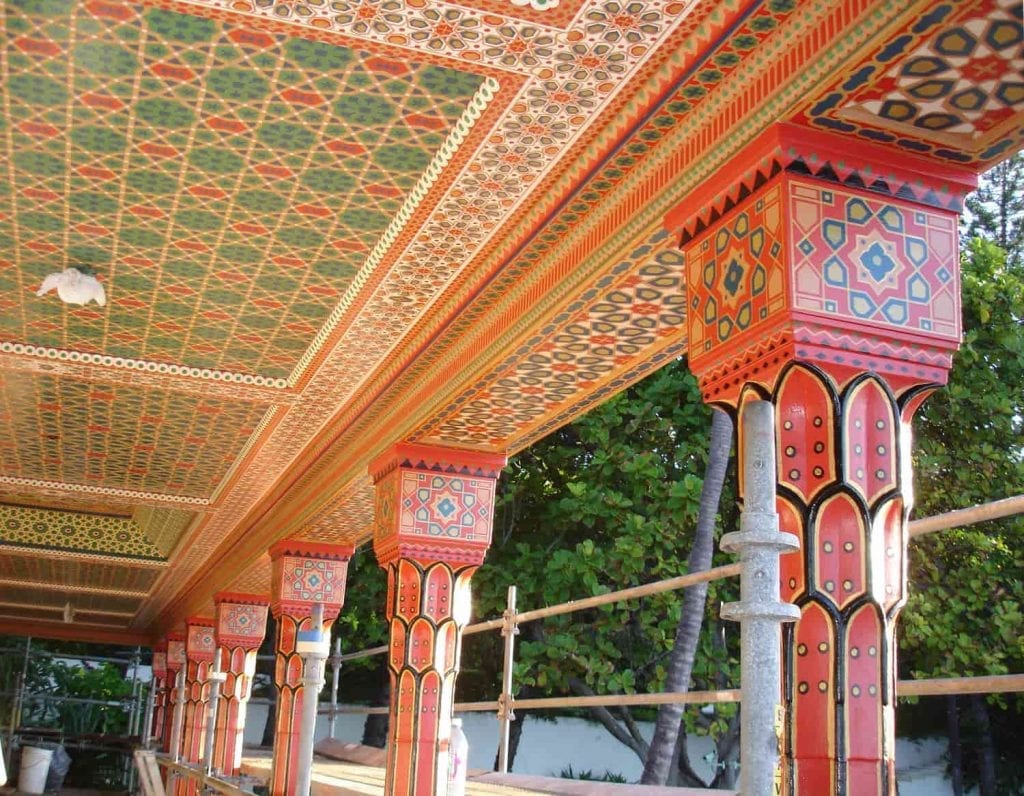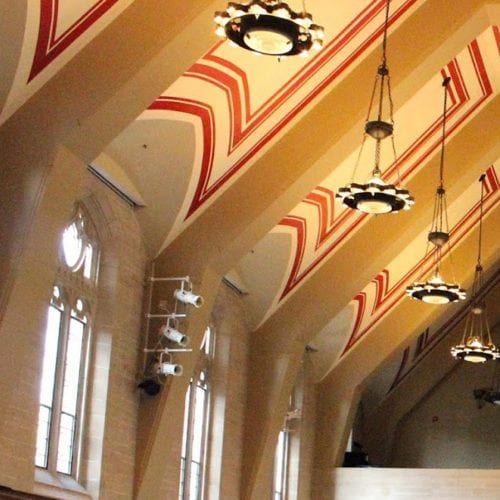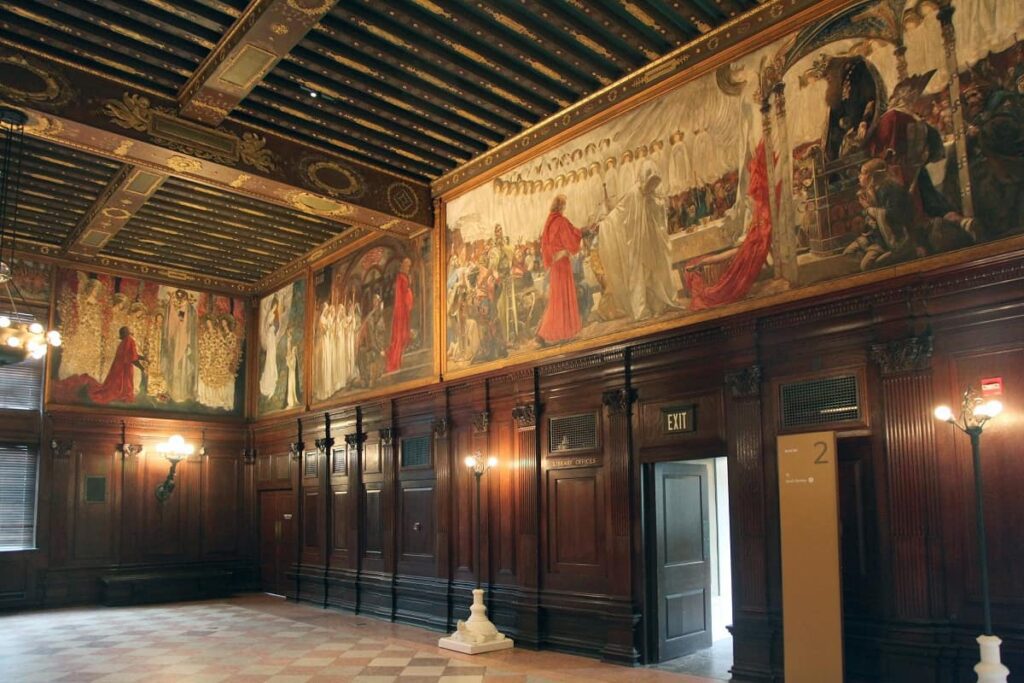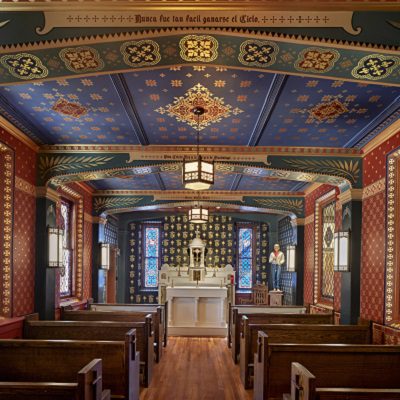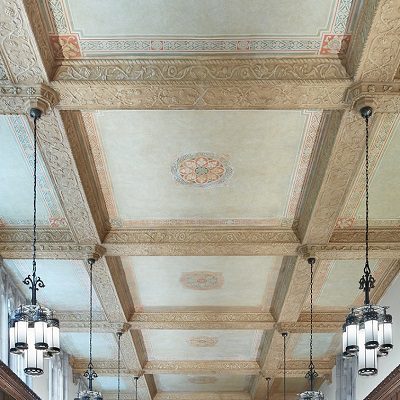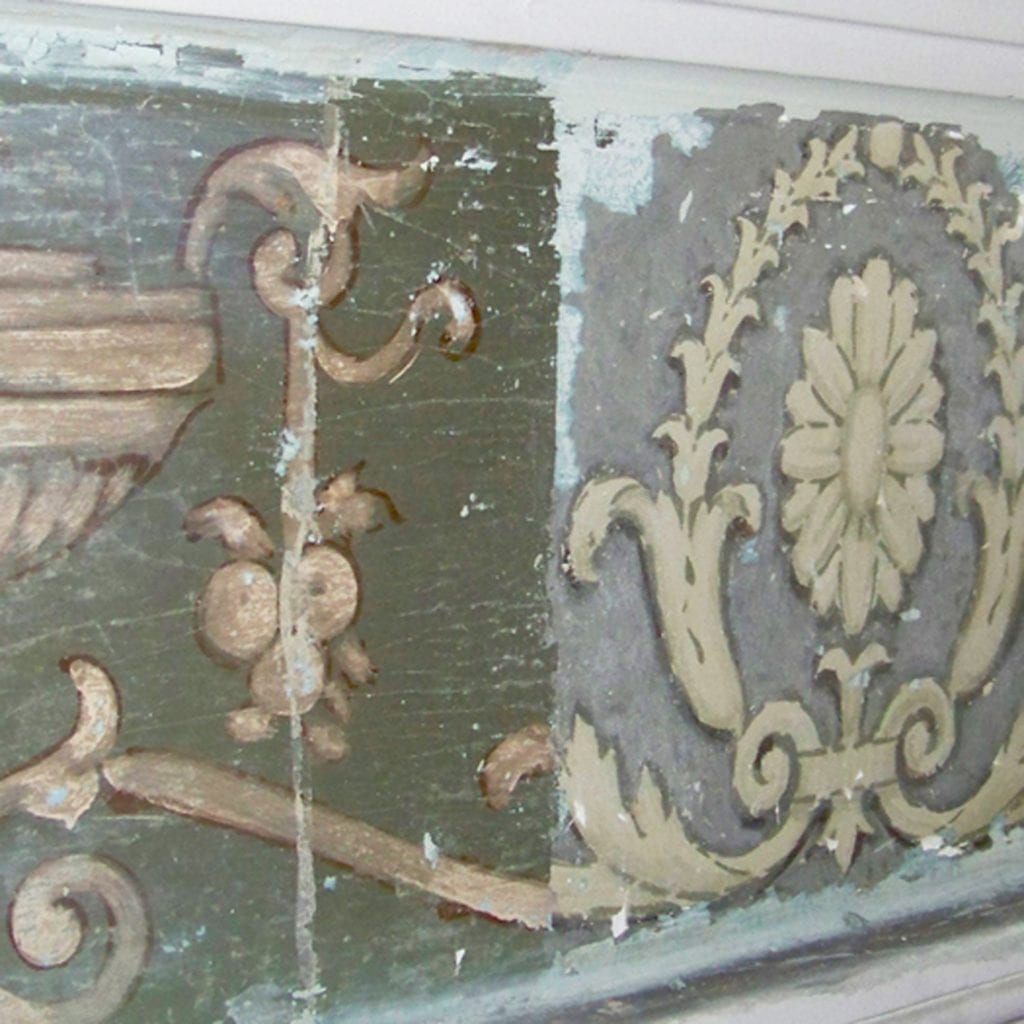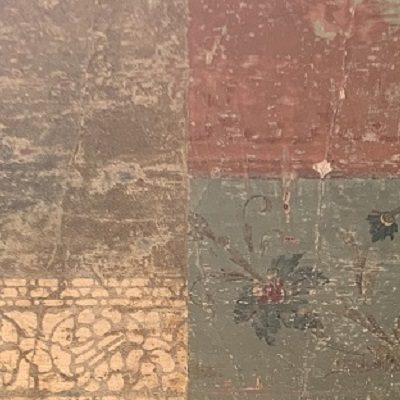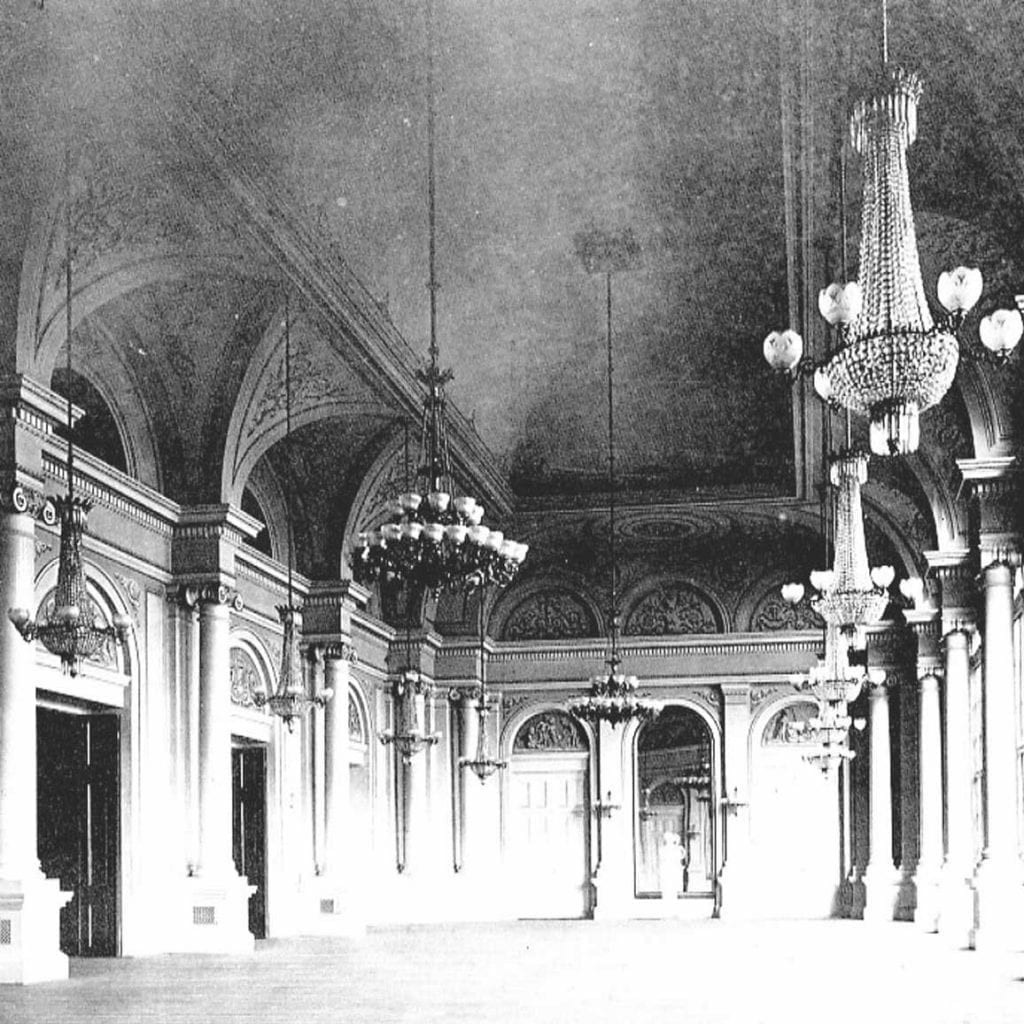Every successful restoration project begins with a well-written specification. A good specification goes beyond highlighting areas of damage and overall budget; it should put forth the qualifications a restoration committee is seeking not only in a conservation firm, but also qualifications expected of both project supervisors and artisans. Additionally, it is important to articulate expectations regarding the quality of materials to be used and any additional standards that have to be met—such as local historical governances, or national designations as these might limit the materials and methods used by restoration professionals. Restoration specs for historic decorative painting follow a strict template, so it is important to add or remove boilerplate language that does not directly apply to the project at hand. The following are important areas to update with appropriate information.
1. Define the scope of the project:
It is important to fully define the various decorative painting methods needed to restore the surface to its original splendor. Have any tests been done to identify material composition? What caused the damage to the surface and is the building envelop secure? Are there other improvements that will be done at the same time—additional lighting, rewiring, or addition of technology?
2. Desired qualifications of the foreman and artisans:
Much like any job posting, minimal skills should be outlined for the company, foremen, and artisans. It is important to go beyond requiring familiarity with different techniques and require knowledge rooted in years of experience working with both materials and techniques directly applicable to those mentioned in the scope. Requiring a verified CV for principles involved in the project and a portfolio of similar projects executed by the company should be included in your specification. Restoration is not only an investment in the past, but also should serve as an investment in the future. Thus, hiring the right firm with the right experience helps to ensure an amicable outcome. Review their qualifications and past projects carefully—restoration can be a major investment of time and money, so it needs to last for future generations.
3. Ability to accurately identify historic materials, paint composition, and techniques:
Chemical tests are an important part of any proposal, but can they paint? Being able to recreate historic surfaces often requires knowledge of historic paint compositions, knowledge of scumbles vs. glazes, and an ability to recreate/match existing finishes like marbleizing or stenciling. Chemical tests can only do so much for restoring the surface. How experienced are perspective firms with matching existing stencils from partially intact surfaces, or historic materials/photographs? What experience do they have implementing plaster reconstruction? Projects with simpler ambitions might not need a contractor with experience in all these fields, but often a project’s scope is always expanding. A decorative paint project is seldom just the application of substrate to a surface. Usually, an extensive study of the surface is conducted to determine the composition, if there are under layers of design, and restorative plaster work. Additional modernizations like running cables, addition of new lighting etc. only add more to the project—make sure the firm you select can flawlessly identify and execute a matching surface.
4. Adherence to ethical standards and pertinent licenses:
Any contractor you hire should adhere to the standards stipulated by the Painting and Decorating Contractors of America (PDA), the “Code of Ethics” and “Guidelines for Practice” of the Institute for Conservation of Historic and Artistic Works (AIC), and a Recognized Professional for APT (Association of Preservation Technology). If it is a civic building, articulate and local, state, or federal standards that are required. Be sure to require an applicant provide pertinent licensing information for any work they are going to be doing. Lastly, it is important to reference standards you wish the final project to meet, such as paint adhesion stands; ASTM Standards such as D3359 for paint adhesion. Important standards for your project can be found on the ASTM website.
5. Other disclosure, as relevant:
Historic buildings often come with unique needs and precautions—it is important to mention any major ones (asbestos or lead paint) as it might limit firms that can take on the project, or require additional subcontractors prior to work beginning. These are often identified with simple tests.
6. How you wish to receive applicants?:
Often a committee is assembled to vote on which firm is awarded a contract, therefore it is not uncommon for a board of governors to request a specific format for applications—letter of introduction from a principle, detailed description of similar projects, CV of supervisors and artisans, portfolio of similar projects with contact information for a member of the commissioning body, current workload and time table for the project, and any additional references they wish to provide. Note an application deadline and if a proposal should be submitted digitally or by mail.
7. Ask for qualified References:
Always be sure to require multiple references for similar projects/scope of work. Perspective firms must have experience working with not only your materials, but also historically accurate techniques. Be sure to obtain before and after photography of restored surfaces similar to those in your project. Always contact past clients of the firm and obtain trade references for any conservation team you are considering hiring.
Choosing the Right Partner for Your Project
The project specification you write is a key piece of the restoration puzzle. Review what others have written and match the needs of your project to a firm accordingly. Incorporating the right information into your RFP will help ensure that the contractor you ultimately choose to work with is the best fit for your project. Ensure you include a finalized summary and make a specification as detailed as possible, to thoroughly communicate the project scope, areas of work, and skills required. Make sure you know the individuals that you are hiring—the more projects of similar scale and scope the better.
The ideal contractor should be willing to work with the Architect, Owner, and any other people involved with the project to provide a deeper understanding—and appreciation—of the original decorative finishes.

